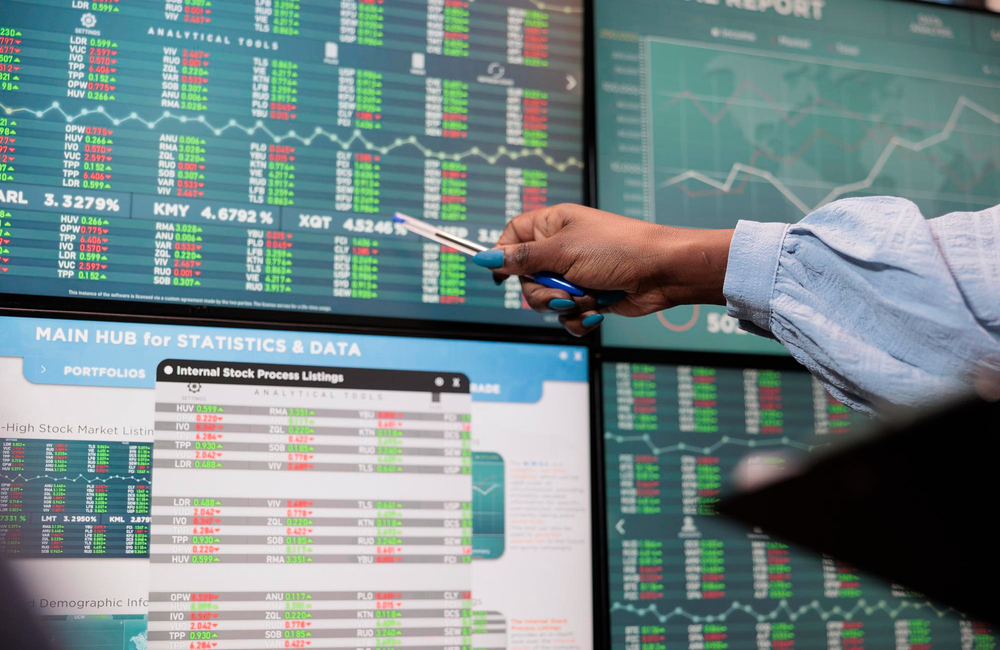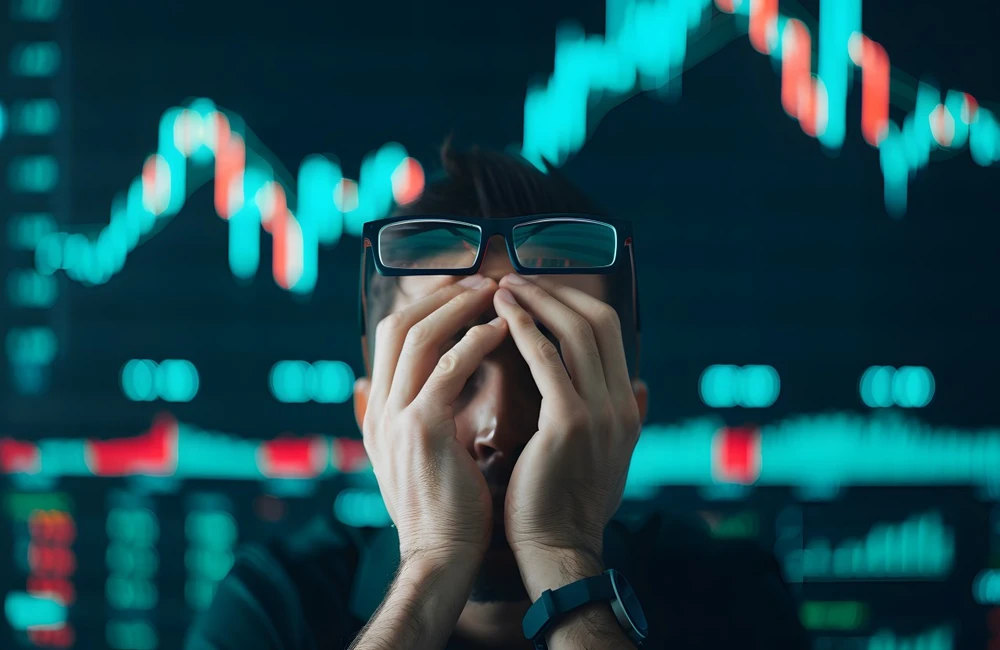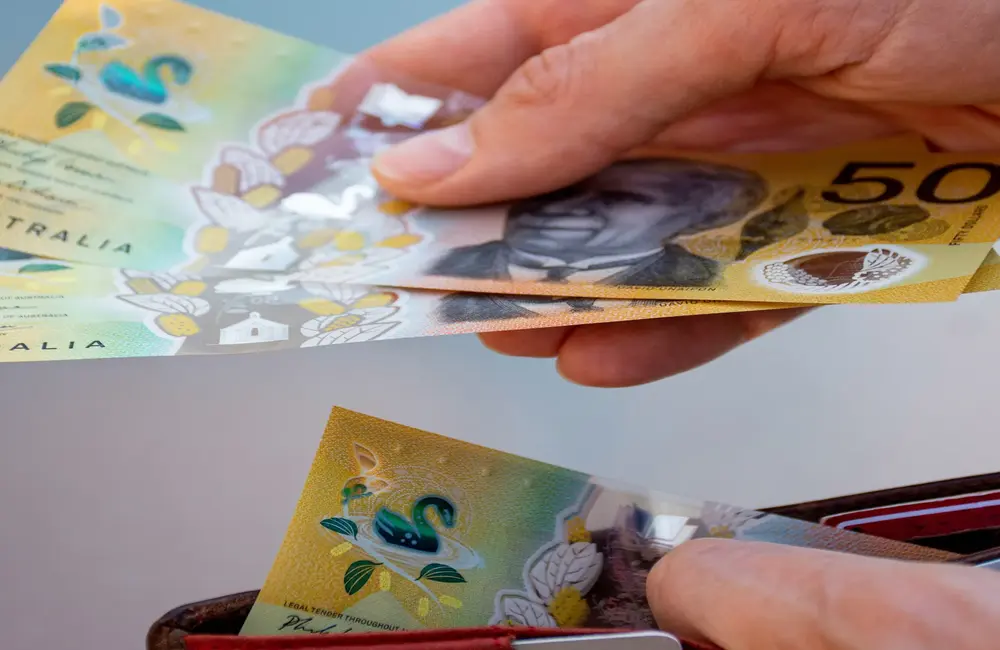ASX futures were up 38 points or 0.5 per cent at 7386 as of 8.00 am AEST, indicating positive leads at the start of the day.
The S&P 500 climbed 1.4 percent in a broad rally that left all 11 sectors with gains. The technology-heavy Nasdaq Composite Index rose 1.9 percent and the Dow Jones Industrial Average advanced 1 percent. All three indexes dropped in the last session on fresh concerns that climbing energy prices and supply shortages will again unnerve investors.
This March has brought a global rally in equities that is reducing the steep losses logged by benchmarks at the beginning of this year. The S&P 500 ended the year down 5.2 per cent compared to a 13 per cent loss on March 14. The local S&P/ASX 200, for instance, has cut its year-to-date losses to 2.7% thanks to a commodities boom.
The market thinks the February lows won’t be broken and we’re in to a more temperate period where investors digest everything that has happened to date, said JMP Securities analyst Mark Lehmann. “We’ve had a lot, and a short period of time,” he said. “So the market’s trying to sort itself out.”
As for equities, they potentially remain volatile as long as the headwinds that have buffeted equities don’t recede: Russia’s war in Ukraine, the start of a tightening cycle for interest rates, soaring commodity prices and the uncertain effects they’ll have on jobs and growth around the planet.
Locally, S&P/ASX 200 added 0.2% to 7387.1, notching a third straight close higher on a rise in commodity stocks.
Energy explorers Beach, Santos and Woodside rose between 0.6% and 2.8% with rising oil prices, while the materials sector rose 1% on higher prices for iron-ore and gold miners. BHP and Rio Tinto were up 1.8% and 2.05%, respectively, while gold miners Gold Road, Regis, Northern Star, Newcrest and Silver Lake gained 1.2% to 2.4%.
The heavyweight financial sector in the country erased broader gains, retreating 0.4% after recent strength.
Wealth managers Pendal, Challenger and Pinnacle lost between 2.6% and 3%. That also means the ASX 200 is up 1.3% just this week.
Crown was unfit to hold a casino license in Perth, with breaches including anti-money-laundering laws, according to a report published on Thursday. The casino would be permitted to keep running while Crown overhauls its operations. Shares closed up 0.2%.
Brickworks said on Thursday it was starting to see possible early signs of softening construction activity in Australia that could impact demand at its domestic building-products unit.
Iron ore in commodity markets lost 10 cents to US$146.35 a tonne; Brent Crude was down 3.1% to US$117.80; gold futures rose 1.3% to $1967.70.
US bond yields edged higher again on Thursday following a dip on Wednesday. The yield on the US 10-Year Treasury Note rose to 2.37%. Australia’s 10-year bond yield dipped to 2.76%. Yields rise when prices fall.
The Aussie remained on its winning streak with commodity prices surging, buying 75.11 US cents at 8.00 am AEST after rising from the last session's close of 74.96. The WSJ Dollar Index, which compares the US dollar to 16 other currencies, was up at 91.48.
Asia
Chinese stocks closed lower, losing ground after a broad rally late last week on signs of an easing in US-China relations over Russia’s invasion of Ukraine. The Shanghai Composite Index, a benchmark for the Chinese market, lost 0.6 percent, and the Shenzhen Composite Index was down 0.9 percent. The tech-heavy ChiNext Price Index fared relatively better, falling 0.4%.
Property stocks were among the biggest losers, with the sector retreating from strong gains the previous few sessions following supportive signals on policy and fund-raising progress by several major developers. Liquidity makers weighed further on the market amid continued concerns about a consumption slowdown in China due to a fresh Covid-19 outbreak the country is grappling with.
Hong Kong’s Hang Seng Index fell 0.7%, following a lackluster showing on Wall Street. US shares fell sharply on Wednesday following oil prices' steep mind, according to KGI Securities. Tencent is the biggest decliner, down 4.1 percent, and JD.com retreats 1.2% and Alibaba Group loses 1.0%.
Property stocks also fall. Country Garden Services Holdings declines 2.1% while China Overseas Land & Investment falls 1.9%. Debt concerns may weigh on stocks in the property sector, KGI adds. Among gainers, China Mobile up 3.0% after posting 2021 results.
Japanese stocks reversed early-day losses to close slightly higher, buoyed by metal and energy stocks. Sumitomo Metal Mining gained 3.4% and Inpex was up 2.0%. Toyota Motor rose 2.9 percent, partly because of a weaker yen. The Nikkei Stock Average gained 0.25%. Investors are still glued to Ukraine as the Biden administration readies more sanctions against Moscow.
Europe
European stock markets ended the session down broadly as investors watched the latest developments on the Russia-Ukraine war. The pan-European Stoxx Europe 600 slipped 0.2 percent.
The war in Ukraine continues to keep investors wary of European stocks, IG analyst Chris Beauchamp said. “Elsewhere, London has eked out modest gains supported by further strength in yields that have supported its financial shares,” he says.
In London, the FTSE 100 advanced on Thursday, ending up 0.1 percent. Fresnillo topped the index, with shares in the Mexican gold miner rising 5.7%. British American Tobacco gained 4.0% after J.P. Morgan upgraded the stock to overweight on the potential of the vaping market, which also lifted peer Imperial Brands, CMC Markets said.
Shares in investment manager M&G gained 2.5% on announcing a 500 million pound (US$660.4 million) share buyback program.
On the more negative end of the UK market, clothing retailer Next dropped 3.3 percent after announcing earnings for the year ended Jan. 30 and cutting guidance for the current period, owing to the impact of the war in Ukraine.
Russia’s stock market surged in its first partial trading session after the West imposed punishing sanctions nearly a month ago. The benchmark MOEX index rose around 4%.
The rise probably won’t be seen as evidence that the Russian economy is doing fine. There was a trading halt as only 33 of the 50 shares on the index were permitted to trade. To avert a sharp selloff, Russia’s central bank banned short selling, and prevented foreigners, who represent a huge portion of the market, from selling their shares.
The move will also help prevent the ruble from dropping in value as foreign investors would probably sell their ruble-denominated shares and then sell the ruble itself for the dollar or euro. Russia’s currency has clawed back some losses against the dollar in the past few sessions, selling at 98 rubles to the dollar on Thursday.
North America
US stocks climbed on Thursday, with Wall Street indexes recovering most of Wednesday’s losses, led by semiconductor and materials stocks.
The S&P 500 climbed 1.4 percent, the technology-heavy Nasdaq Composite Index advanced 1.9 percent and the Dow Jones Industrial Average added 1 percent. All three indexes finished lower in the last session after fears about higher energy prices and supply shortages once more unsettled investors.
All 11 sectors of the S&P 500 gained. The tech sector rose 2.7% and materials followed with a 2% gain. Energy, the best performing sector by far in 2022, was Thursday’s worst performing group but still scraped together a 0.1% gain.
Stocks have been under pressure this year as inflation rises, economic signals are mixed, the war in Ukraine persists and disruptions from pandemic life continue. The S&P 500 has fallen 5.2 percent so far in 2022, while the Nasdaq, which has dropped 9.3 percent, is stuck in its longest bear market since 2008.
But that downturn follows a long rally. Wednesday was the two-year anniversary of the stock market’s pandemic lows. The S&P 500 and Nasdaq have doubled since then, and the Dow is up nearly 90%.
The market is signaling that the February lows won’t be broken and equities are entering a cooler season where investors will attempt to digest all that’s happened to this point, said JMP Securities analyst Mark Lehmann. “We’ve had a lot in a very short amount of time,” he said. “The market’s trying to find itself.”
The market rose on Thursday after a mixed bag of economic data.
The number of Americans filing for first-time unemployment benefits dropped to 187,000 in the week ending March 19 the lowest level since September 1969 down from 215,000 the prior week.
But new orders for durable goods products expected to last at least three years—declined 2.2% in February from the previous month after auto production was once more disrupted by supply-chain bottlenecks and Boeing Co. had a relatively weak month for aircraft orders.
Investors have struggled to assess how Russia’s war with Ukraine will further burden supply chains already disrupted by Covid-19. A rise in oil prices, which are still above $100 a barrel, have contributed to worries that consumers could face rising costs of energy as well as higher costs for items such as plastic wrap or lawn fertilizer. Federal Reserve officials have signalled a handful of further interest-rate hikes this year to keep inflation in check.
US crude lost 2.3% to $112.34 a barrel.
“It was all about rising rates through mid-February, and then it was all about the war, and what we’re worried about now is that they’ve combined,” said Daniel Morris, chief market strategist at BNP Paribas Asset Management. “The real tough thing in this environment is what do you buy. You can't sit in cash. It’s a ‘least-bad option’-type of market.”
Among individual stocks, Nikola gained 52 cents, or 5.7%, to $9.66 after it agreed to production for its electric commercial truck, the Tre. Uber rose $1.64, or 5 percent, to $34.70 after announcing it would include all New York City taxis on its app.
Within the semiconductor industry, Nvidia gained $25.16, or 9.8 percent, to $281.50, and Intel climbed $3.35, or 6.9 percent, to $51.62, its biggest one-day bump since January 2021, as investors wagered that surging demand for chips would trump near-term logistics problems.
In bond markets, the yield on the benchmark 10-year Treasury note rose to 2.340% from 2.320% Wednesday. Yields and prices are inversely correlated.

























